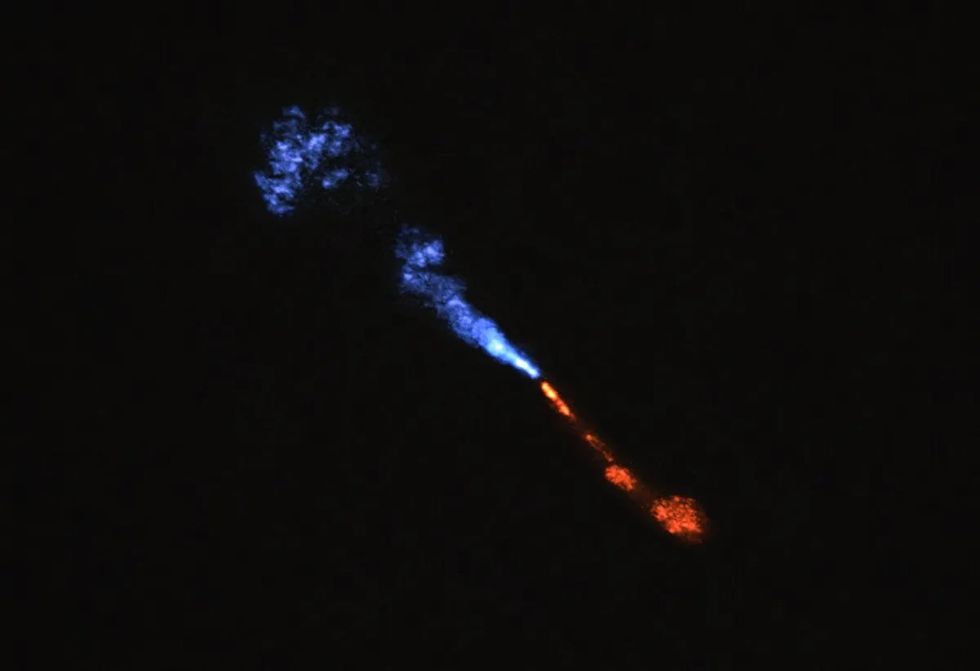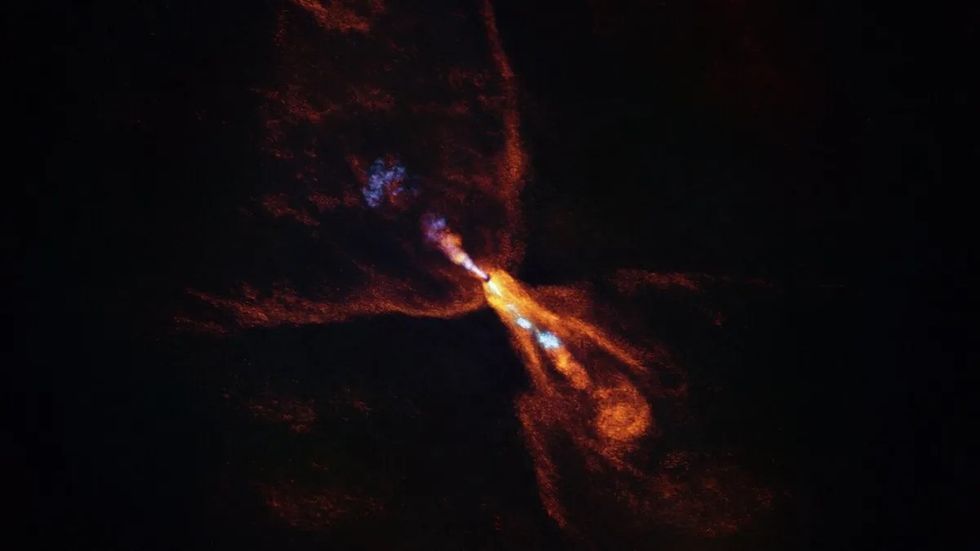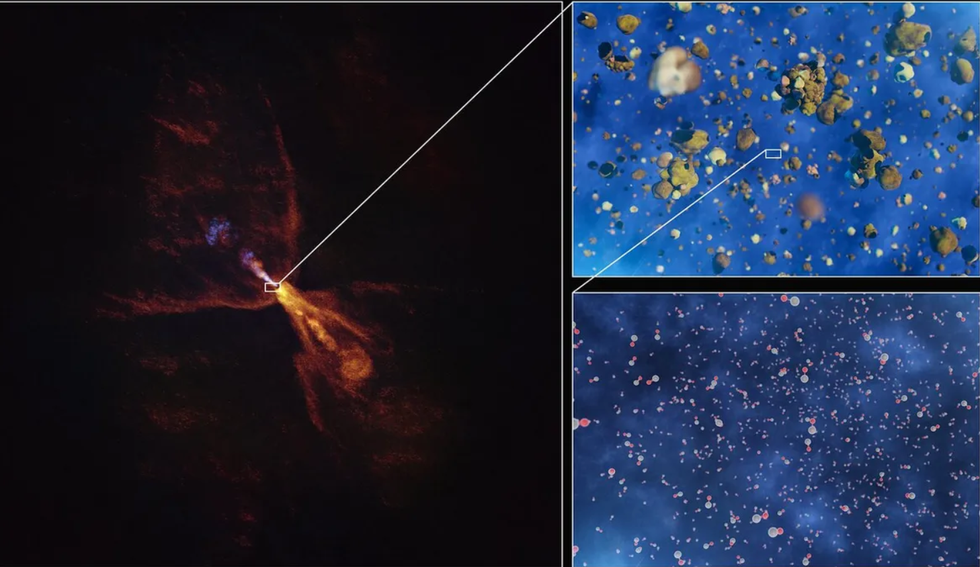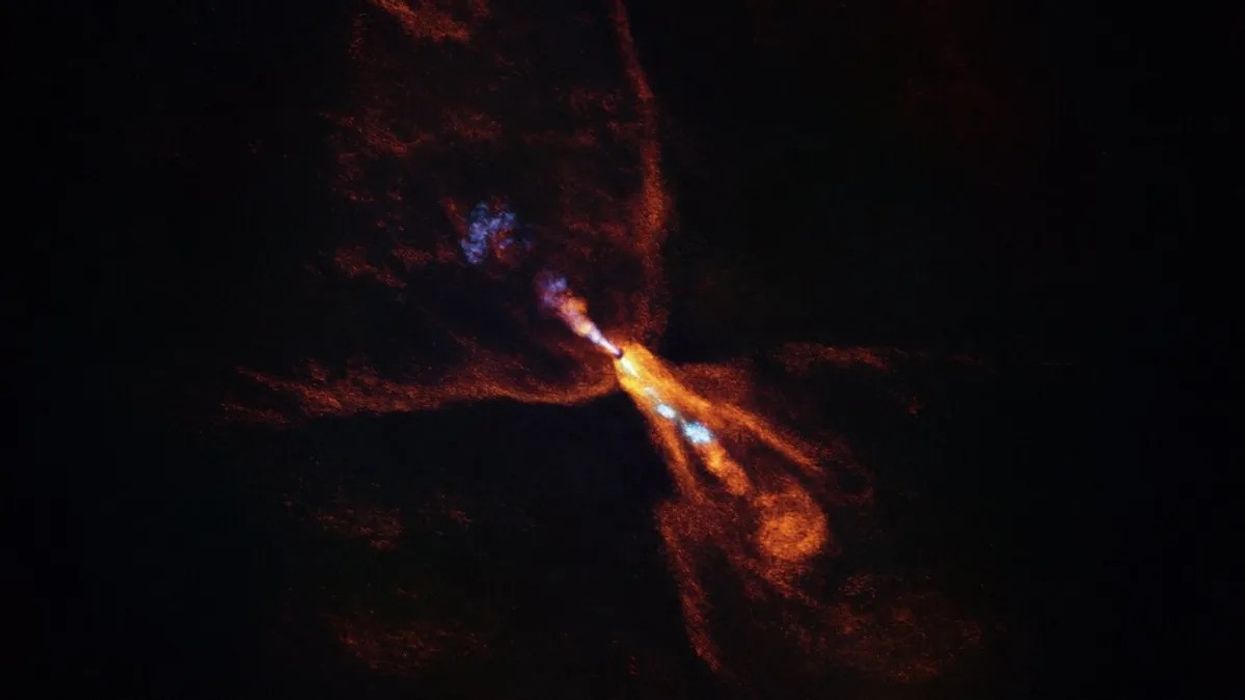Highlights:
- Scientists detect earliest stage of planet formation around star HOPS-315.
- Discovery made using data from JWST and ALMA telescopes.
- Findings could mirror conditions in our solar system 4.6 billion years ago.
- Research published in top journal Nature on 16 July.
In a historic breakthrough, astronomers have captured what they call the “earliest moment” when planets begin to form, not around our Sun, but around a young star named HOPS-315 located about 1,300 light-years away in the Orion constellation. The discovery marks the first time solid mineral grains, the initial seeds of planet formation, have been observed emerging within a protoplanetary disk around a new-born star.
The finding was made possible by the combined power of the James Webb Space Telescope (JWST) and the Atacama Large Millimeter/submillimeter Array (ALMA) in Chile. The results were published on Wednesday (16 July) in the journal Nature.

JWST and ALMA uncover the origin of rocky worlds
The team, led by Leiden University astronomer Melissa McClure, used JWST’s high-resolution infrared data and ALMA’s radio imaging to peer through dense clouds of dust surrounding HOPS-315, a protostar weighing about 60% the mass of our Sun.
What they found was unprecedented: crystalline silicates and gaseous silicon monoxide, crucial ingredients for rocky planet formation, beginning to solidify in a zone comparable to our solar system’s asteroid belt. This specific location suggests a likely match to the area in our system where similar minerals first condensed before forming planets.
“We’ve finally captured a glimpse of where Earth-like planets might start their journey,” McClure said. “This is the clearest snapshot of the early stages of planet formation we’ve ever seen.”

HOPS-315 resembles our solar system’s ‘time zero’
Scientists often rely on ancient meteorites to understand the early solar system, particularly calcium-aluminium-rich inclusions (CAIs), which are the oldest solid materials known to have formed around the Sun. But direct observation of such a moment elsewhere in the universe had never been achieved, until now.
HOPS-315, still surrounded by its original envelope of dust and gas, is oriented in such a way that astronomers could view its inner disk, a rare alignment that acted like a cosmic window. The young star is currently shooting out jets of material, but researchers confirmed the silicon-based minerals are part of the swirling disk, not the jet.
“This system is like a baby picture of our own solar system,” said Merel van ’t Hoff of Purdue University, a co-author of the study.
A promising model for studying early planet formation
While previous research has often focused on older, cooler planetary disks, this is the first confirmed observation of hot minerals beginning to condense in real time, the critical first step in planetesimal creation. These planetesimals, in turn, grow into planets over millions of years.
Phil Armitage, a theorist from Stony Brook University not involved in the study, said, “The minerals forming around HOPS-315 are consistent with what we’d expect during our solar system’s earliest stage, a fraction of a million years into its birth.”
Though the researchers did not detect CAIs directly, the conditions around HOPS-315 match several leading models of how such minerals emerged in our solar system.

What’s next? More young stars under the lens
The discovery raises the possibility that other young protostars may also be going through similar processes. One potential target is HOPS-68, previously observed by NASA’s Spitzer telescope. With JWST’s enhanced sensitivity, astronomers now hope to revisit such targets and uncover more examples of planets in their earliest stages.
As McClure notes, “Only about 2% of the silicon we expected was found in the star’s jet. That suggests the rest may already be forming larger rocky bodies within the disk.”
The findings not only provide a window into the origins of our own solar system but also open the door to studying the universal conditions that lead to planet formation.














